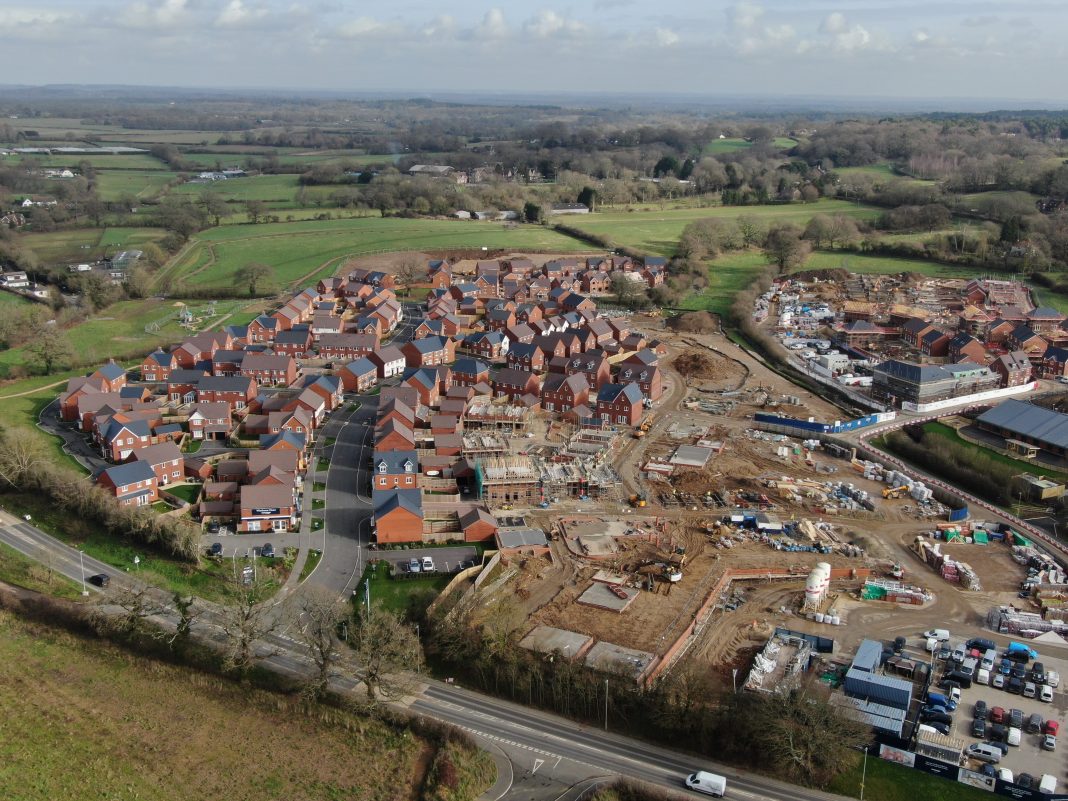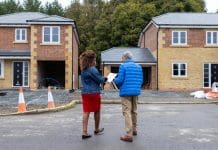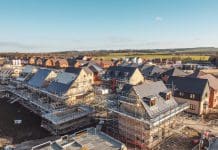Housing sites of 2,000 or more properties take an average of eight years to deliver their first home from the initial planning application, according to research by Lichfields
Lichfields’ latest update to the ‘Start to Finish’ research looks at how long it takes for housing sites of differing sizes and characteristics to deliver homes.
The largest sites have not delivered within the window for local authorities’ essential five-year land supply statements, according to the research.
Only smaller housing sites – under 500 homes – have consistently delivered homes within five years of submitting an outline planning application – at an average of three years.
This reflects the practicalities involved in discharging conditions, servicing the site, and building new homes, say Lichfields.
Larger housing sites do however build out more each year once they have started. The research finds a variation in average build rates, increasing with the size of the site. Build rates range from an average of 22 homes built each year in sites of under 100 units, to 160 each year on sites over 2,000 homes.
The research also revealed that developments with more affordable housing tend to build-out faster, at close to twice the rate of those with low levels of affordable housing.
While schemes developed on greenfield land are delivered quicker than those on brownfield sites.
Housing delivery is crucial for local authority plans
Lichfields’ senior director Matthew Spry, said: “The question of how quickly and how much housing a site can begin delivering once it has planning permission or an allocation is significant because large-scale developments are an increasingly important component of local authority plans for housing; our recent research on Garden Communities found that local authorities often rely on such schemes to deliver a third or more of the housing they require.
“Only deliverable sites with a realistic prospect that housing will be built within five years can be included in a calculation of a five-year housing supply by a local authority.”
This latest Lichfields research constitutes an analysis of 97 sites over 500 dwellings of which 35 of the housing sites were earmarked for 2,000 homes or more. The 97 sites equate to more than 195,000 dwellings.
Lichfields’ study gives context to the question of why planning permissions take time to build out. The findings coincide with the recommendations of the Letwin Review which posited that a broader range of housing types on any single development would boost take-up.
Fill the knowledge gap
Spry added: “Our research presents some averages, but there is significant variation across the sites we looked at – some are quick, others less so – and the pace of delivery depends on a wide range of factors, many of which are down to the on-the-ground reality of development specific to that location. It is incumbent on local plans to have a good understanding of the circumstances of development of a particular site so they can identify what might help to improve the pace of build out, but then also be prudent in what is expected to be delivered, so supply is maintained throughout the plan period.
“A number of local plans have hit troubles because they over-estimated the yield from some of their proposed allocations, and in too many local plans and five-year housing land supply cases, there is insufficient evidence to justify how large sites are treated in housing trajectories.
“Our research seeks to fill the gap with some real-world benchmark figures, but this remains no substitute for evidence which considers the specifics of a given site and its approach to delivery.”
The Lichfields research also provides a reality check on the recent LGA report suggesting a backlog of homes due to a gap between the number of planning permissions granted and houses completed since 2012, said Spry.
He added: “Our research shows that one needs to be sceptical about a simple comparison between a volume of planning permissions and the number of homes completed.
“The LGA’s figures for unbuilt permissions include thousands of homes that are proposed to come forward in step with infrastructure and be built out in phases.”














